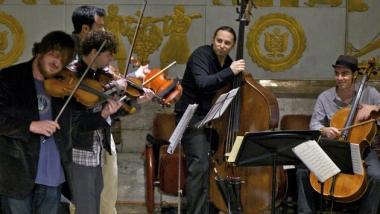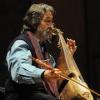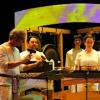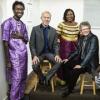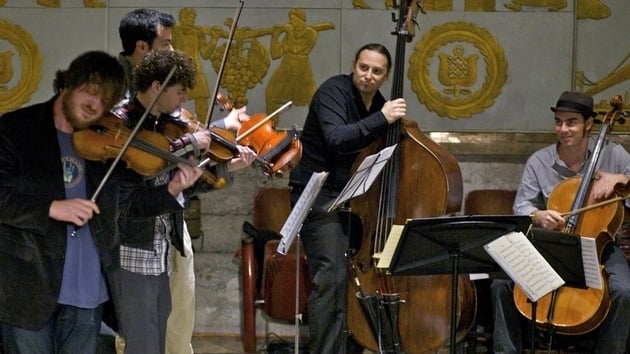
Sascha Jacobsen describes the sound of the Musical Art Quintet, the eclectic group he founded more than 10 years ago, as “the crossroads between Jewish, jazz, and tango.” And that makes perfect sense for the accomplished bass player, composer, and arranger, who traced his own lineage from a musical Ashkenazi family in Russia on one side, and to Spanish Jewish immigrants on the other side, who settled on the island of Rhodes in Greece. To honor his cultural heritage, Jacobsen composed a Jewish oratorio, Kanta Judezmo, a major, hour-long work comprising six songs with four instrumental interludes for the quintet. They will be performing it on June 30, at the Old First Church in San Francisco.
In addition to the players in the Musical Art Quintet — violinists Jory Fankuchen and Anthony Blea, cellist Lewis Patzner, violist Charith Premawardhana, and Jacobsen on string bass, Kanta Judezmo will include a mezzo-soprano soloist (Melinda Martinez Becker), dancers, and Spanish guitar. The libretto was penned by poet, writer, and performer Bobby Coleman, who also has Sephardic roots. It is written partially in Ladino, an ancient language that is a mixture of Spanish and Hebrew. “I had been wanting to do this Ladino project for years,” said Jacobsen by telephone from his home in San Francisco. “I was really fascinated and inspired by the Spanish connection, because I love Latin, Spanish, flamenco, Argentine, and Cuban music. I am just so drawn to it.”
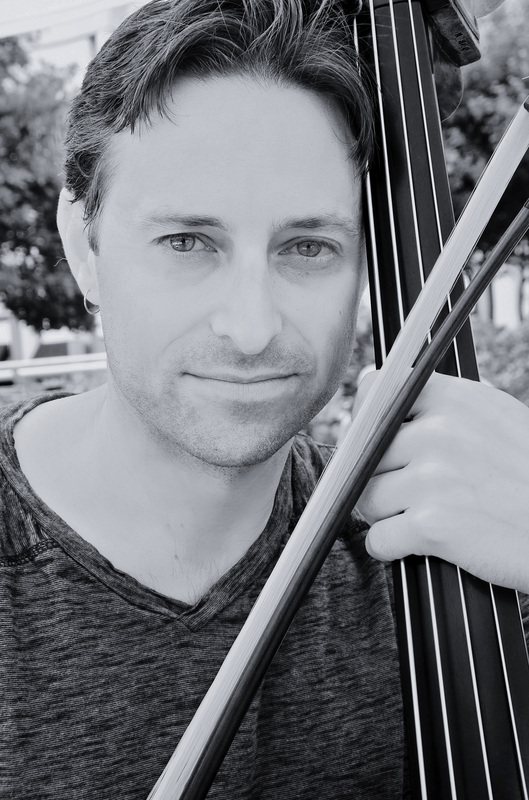
“Basically, all the Jews who lived in Spain before 1492 spoke an ancient form of Spanish with some Hebrew words thrown in,” Jacobsen continued. “The whole Mediterranean area was filled with Jews who fled from Spain to Morocco or Rhodes, and many ended up in America and Argentina. In L.A. in the 1920s, they give synagogue services in Ladino — there were so many immigrants from the Mediterranean who spoke it. I speak Spanish and my wife is from Argentina, and when I found out that my ancestors spoke Spanish, it was a total revelation.”
So when he applied for a cultural equity grant from the San Francisco Arts Commission, which encourages a cultural connection for grant projects, it seemed like a perfect fit. It premiered on April 30 at Congregation Emanu-El in San Francisco to a large enthusiastic crowd. “It’s a piece that should draw you in, and hopefully, it touches you,” said Jacobsen.
Jacobsen was born in a remote cabin in the woods in 1973 to “hippie” parents who moved from the Haight-Ashbury district in San Francisco to Humboldt County and grew vegetables. And although his parents were not particularly musical, you could say he has musical genes. His great-great-great-great grandfather was a bassist for the Moscow Opera and his great-grandfather, his namesake, was a famous Russian violinist who became the concertmaster of the Los Angeles Philharmonic and gave lessons to his friend, Albert Einstein.
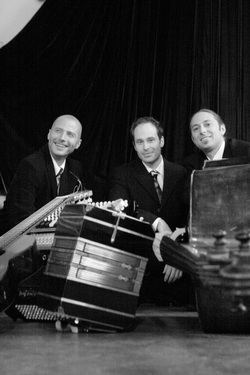
After a few years in Santa Fe, New Mexico, the family returned to the Bay Area, where Jacobsen has been ever since. He picked up the bass when he was 16, playing rock ‘n’ roll and reggae, and then got really turned on to jazz. He went on to study classical technique and earn his master’s degree at the University of Southern California, in double bass performance. His diverse performance credits range from principal bass with the Santa Cruz Symphony to appearances with acclaimed artists like the Kronos Quartet, Hugh Jackman, Martin Short, Bonnie Raitt, Josh Groban, and Kristin Chenoweth.
Jacobsen’s passion for a variety of musical styles is what originally inspired him to form the Musical Art Quintet, which he writes and arranges all the music for. “I am always writing,” said Jacobsen. “I usually use a rhythm as the basis for my compositions, whether it’s a tango or a milonga or a cha cha cha or a waltz. But it can also be sparked from a melodic or harmonic idea.”
“I call it classical sensibility. It’s chamber music, but with a jazz approach and with Latin rhythms,” he continues. “I love all kinds of music, and I just put in whatever I love.” Jacobsen’s passion for tango, however, led him to work with another group, Trio Garufa, which performs classic Argentine tango and folk music, and includes Guillermo Garcia on guitar and Adrian Jost on bandoneon. They have performed at many tango festivals nationally and internationally, and are all tango dancers as well. “Tango dancing is like an obsession,” said Jacobsen. “I know, because I’ve been dancing for 10 years now.” In fact, that’s how he met his wife, Andrea Fuchilieri, a tango dancer and teacher from Argentina, who was managing the trio when he joined.
Always broadening his horizons, Jacobsen’s latest project is Los Tangueros del Oeste, which features Adrian Jost on bandoneon, Carlos Carminos on guitar, Seth Asarnow on piano, and Daniel Riera on analog synth. “I wanted to do a more modern style of tango — electro-tango — and do more original compositions,” said Jacobsen. They recently released a playful, campy video, Un Bajo de Magia (A Magic Bass), where his bass transforms into a sassy tango dancer, and they will be performing on June 26 at SOMArts Cultural Center in San Francisco.
A freelance musician for more than 20 years in the Bay Area, Jacobsen only seems to be getting busier. He hopes to make a record with his newest group and would like to perform Kanta Judezmo around the world at Jewish festivals and JCCs. And for Jacobsen, it’s all great fun. “It was one of those things that just sort of happened. I just loved music, and I decided to follow that path.

